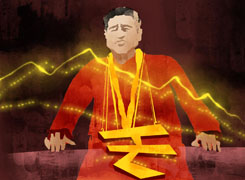I am 40 year old below is my portfolio, current monthly expenses is 25k. Monthly income 1.2 lacs, 50 lkh in fd (with short and long term). 30 lkh in savings account.
Lic 5 lkh going to mature in 2032. 2 lkh in mutual fund.Medical insurance 5 lkh. Have own flat in Bangalore worth 1.5 crore. No children. Wanted to retire at the of 50. Please advice how to invest so that will get a decent income post retirement. Thanks .
Ans: You have built a good financial foundation. Your goal to retire by 50 is achievable with the right asset allocation and disciplined investment approach. Below is a full 360-degree assessment of your portfolio and retirement planning.
» Income, Expenses and Savings Ability
– Your monthly income is Rs. 1.2 lakh.
– Monthly expense is only Rs. 25,000.
– So, your monthly surplus is Rs. 95,000.
– That’s almost 80% savings ratio. Excellent discipline.
– Over next 10 years, this surplus must work hard for you.
» Analysis of Existing Asset Allocation
– Rs. 50 lakh in fixed deposits is quite conservative.
– Rs. 30 lakh lying idle in savings account is underperforming.
– LIC policy is low value and matures too late.
– Only Rs. 2 lakh invested in mutual funds is too low.
– Total financial assets = Rs. 82 lakh (excluding property).
– Allocation is highly skewed towards low-return instruments.
– Flat worth Rs. 1.5 crore is self-occupied, not income-generating.
» Assessment of Retirement Goal
– You want to retire at 50. You are now 40.
– That gives you only 10 years to build retirement corpus.
– Post-retirement, you may live till 85. That’s 35+ years.
– Assuming Rs. 40,000 to Rs. 60,000/month expenses post-retirement, inflation-adjusted.
– Your corpus should generate income for 35 years.
– So, you must shift towards growth-oriented instruments now.
– Current FD and savings account will not beat inflation.
» Suggested Investment Strategy (Shift from Idle to Active)
– Rs. 30 lakh in savings account must be redeployed.
– Rs. 50 lakh FD should be gradually reduced.
– Keep only Rs. 10 lakh in FD as emergency fund.
– Rs. 70 lakh (from FD + savings) should be moved to investments.
– Use STP route to shift into equity mutual funds over 12-18 months.
– Begin SIPs from monthly surplus of Rs. 95,000.
– Allocate Rs. 80,000/month towards mutual fund SIPs.
– Keep Rs. 15,000/month for annual insurance premium and minor contingencies.
» Suggested Mutual Fund Asset Allocation
60% to diversified equity mutual funds (flexi-cap, large & mid-cap, mid-cap)
20% to aggressive hybrid funds for stability
10% to dynamic asset allocation or balanced advantage funds
10% to short duration debt funds or liquid funds for near-term liquidity
– Avoid thematic, sectoral, or small-cap funds at this stage.
– Focus on consistency, long-term compounding, and risk-adjusted growth.
» Why Regular Funds Through MFD Are Preferred Over Direct
– Direct funds seem low-cost but have hidden risks.
– Wrong fund selection, wrong time entry/exit can reduce gains.
– You miss expert guidance during volatile markets.
– MFD with CFP helps align funds to goals, tax strategy, asset rebalancing.
– Regular plans include this personalised handholding.
– Over 25+ years, this guidance adds more value than direct cost savings.
» Why You Should Avoid Index Funds
– Index funds just follow market blindly.
– No downside protection in falling markets.
– Returns can be volatile and unfiltered.
– Actively managed funds have fund manager insight and agility.
– They can avoid underperforming sectors and overweight growth ones.
– For wealth creation and peace, active funds are better for you.
» Reassess the LIC Policy
– LIC maturity is 2032 with only Rs. 5 lakh value.
– Check if it is a money-back or endowment plan.
– Return is likely below 5% CAGR.
– If surrender value is available, consider exiting.
– Reinvest this in mutual funds for long-term compounding.
– Insurance should be for protection, not investment.
» Insurance Planning Review
– Rs. 5 lakh health cover is too low.
– Healthcare inflation is high.
– Add a Rs. 25 lakh top-up super top-up health insurance.
– Premium is reasonable and gives long-term protection.
– You don’t need term insurance as you have no dependents.
» Retirement Corpus Strategy (Rs. 2 Crore Target or Higher)
– With Rs. 70 lakh lumpsum invested, plus Rs. 80,000/month SIP for 10 years
– You can build over Rs. 2 crore corpus at moderate returns.
– This will be your retirement fund post age 50.
– From age 50, start SWP from this mutual fund corpus.
– Withdraw only 4% annually to sustain for 30+ years.
– This gives inflation-adjusted monthly income for long term.
» Safe Withdrawal Strategy After Retirement
– Avoid withdrawing from entire corpus.
– Use SWP (Systematic Withdrawal Plan) from hybrid and debt funds.
– Keep 3 years’ expenses in liquid/short-term debt funds.
– Rest should remain in equity mutual funds to grow.
– Review withdrawal strategy every 2-3 years.
– Rebalance between equity and debt periodically.
» Tax-Efficient Withdrawal Approach
– After retirement, your income will be lower.
– Use basic exemption limit every year (Rs. 3 lakh).
– Withdraw from equity funds using SWP – LTCG above Rs. 1.25 lakh taxed at 12.5%.
– Short-term capital gains (STCG) are taxed at 20%.
– Debt fund withdrawals taxed as per slab.
– So plan withdrawals smartly across fund categories.
– Reduce FD interest as it’s fully taxable.
» Why Real Estate Is Not a Retirement Tool
– Your Bangalore flat is self-occupied.
– You may get emotional offers to sell or rent.
– But maintenance, tenant risk, low rental yield is a burden.
– Do not plan retirement income from property.
– Focus on financial assets which are liquid and low hassle.
» What Not To Do
– Don’t keep large savings idle in account.
– Don’t over-rely on FDs.
– Don’t treat insurance as investment.
– Don’t try to time the market.
– Don’t fall for direct plans or low-cost apps without advice.
– Don’t invest in ULIPs or NPS at this stage.
– Don’t delay investments waiting for perfect time.
» Next Steps for You
– Start liquidating Rs. 30 lakh savings account into STP.
– Review FD maturity schedule. Shift Rs. 40 lakh in phased manner.
– Begin SIPs with Rs. 80,000 monthly commitment immediately.
– Meet Certified Financial Planner (CFP) to select best mix of mutual funds.
– Set clear retirement corpus target. Monitor yearly.
– Track performance. Rebalance every year.
– Upgrade health insurance. Discontinue low-return LIC if possible.
» Finally
You have a golden chance to retire early. You already have high savings, no loan, own house. With focused equity investments and periodic reviews, Rs. 2.5 crore+ retirement corpus is possible in 10 years.
But idle funds must be activated today. Mutual funds give the right balance of growth and liquidity. Don’t settle for FD-like returns in your best earning years. Take action step-by-step with guidance from a MFD with CFP certification.
Best Regards,
K. Ramalingam, MBA, CFP,
Chief Financial Planner,
www.holisticinvestment.in
https://www.youtube.com/@HolisticInvestment

























